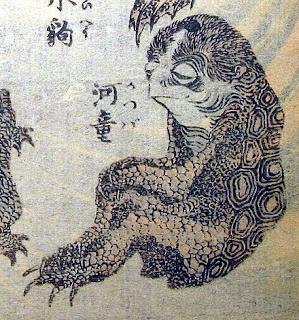Reading Part B: The Year of Disguise
I chose I choose the Kincaid version of the Mahabharata. It focuses on the Princes or the Pandavas brothers. The story I am considering is The Year of Disguise, Part 13 of Kincaid’s version. I love the theme that comes with disguises and the problematic issue of identity that it arises in the characters.
At the beginning of the story, it has been twelve years in the forest. The group has a well-formulated plan that has been in the works for quite a while. I think that the time is significant because of how much detail had to be placed into the plan in order for its success. The time is also significant because you cannot take on the identity of something that you, inherently, are not – even for a disguise – without taking the time to adapt to it and learn the nuances of that chosen disguise. This usage of the time can be seen the complicated choices that the disguises are.
Yudhishthira had to learn the art of gambling, but not only simply learned the art of it but also to possess a certain amount of skill in order to be a successful enough gambler that he can put on the disguise of Kanka, a gambler. Kanka, in my interpretation, must be a chronic gambler with years of experience that Yudhishthira had to develop in order to play that role. I think it is interesting the delve into the psychological ramifications of becoming something that is not your natural state (i.e. a prince into a most-likely low-caste gambler).
Bhima becomes a cook named Ballaba. He could have become a simply proficient cook if he wanted to invade the castle of King Virata. He had to become a very good chef, molding his skills to become one of the very best.
Arjuna becomes Brihannala, a dancing teacher. Don’t even get me started on the time it takes to be a proficient dancer, let alone one who can TEACH dance.
Nakula takes the name Granthika, working the stables, while Sahadeva takes Tantripala to become a cowherd. This may not seem to take a lot of adjusting since they have lived in the forest for twelve years, but it does. They have to take their egos down several notches and become quiet pegs that can be moved and ordered about since these positions lack notoriety of being princes.
Draupadi becomes the Queen Sudeshna’s maid as a woman named Sairandhri. Okay, first of all, lady-in-waiting were other nobles, lower in importance than the queen, but still holding significant positions as the wives or daughters or cousins or mothers of important men within the court of the King Virata. That she managed to infiltrate this rather tight circle of nobility to become a maid, even as one who is a servant unrelated to the royals and the court, must have been difficult as even that ring of servants were often circled with tasks that had probably been given or assigned to a certain (proud-of-it) family for many generations as a tradition.
I think just this transformation of character is super important and worth trying to decipher or explore in a story.
Image from Adobe




Hi Lauren,
ReplyDeleteI was browsing the class blog stream for some extra commenting opportunities and even some examples of how others format their reading notes. I really enjoyed the format that you used for these notes. I like how you describe what happens in the story and then link it to possible storytelling opportunities for later. I think this is a great approach.
-Andy